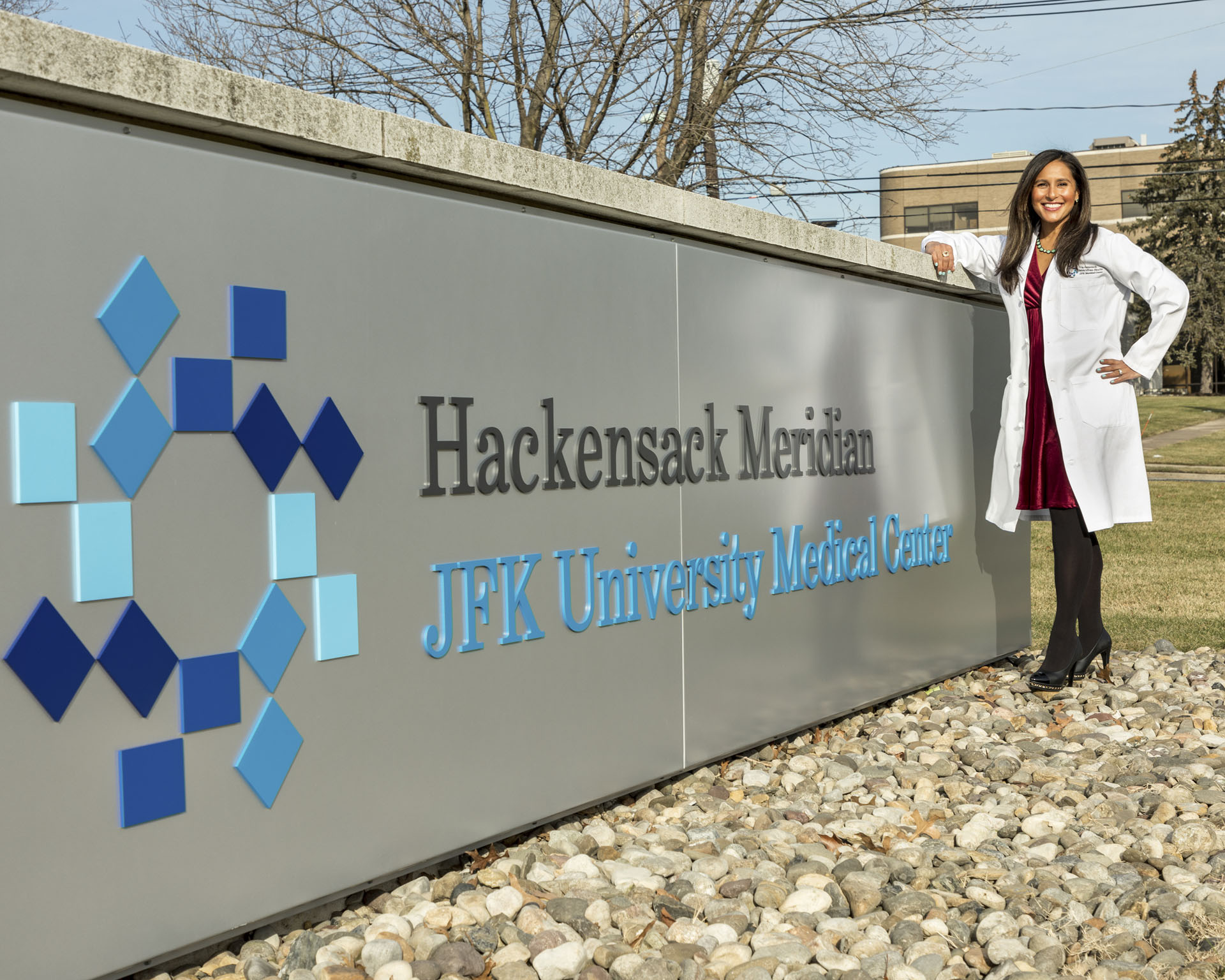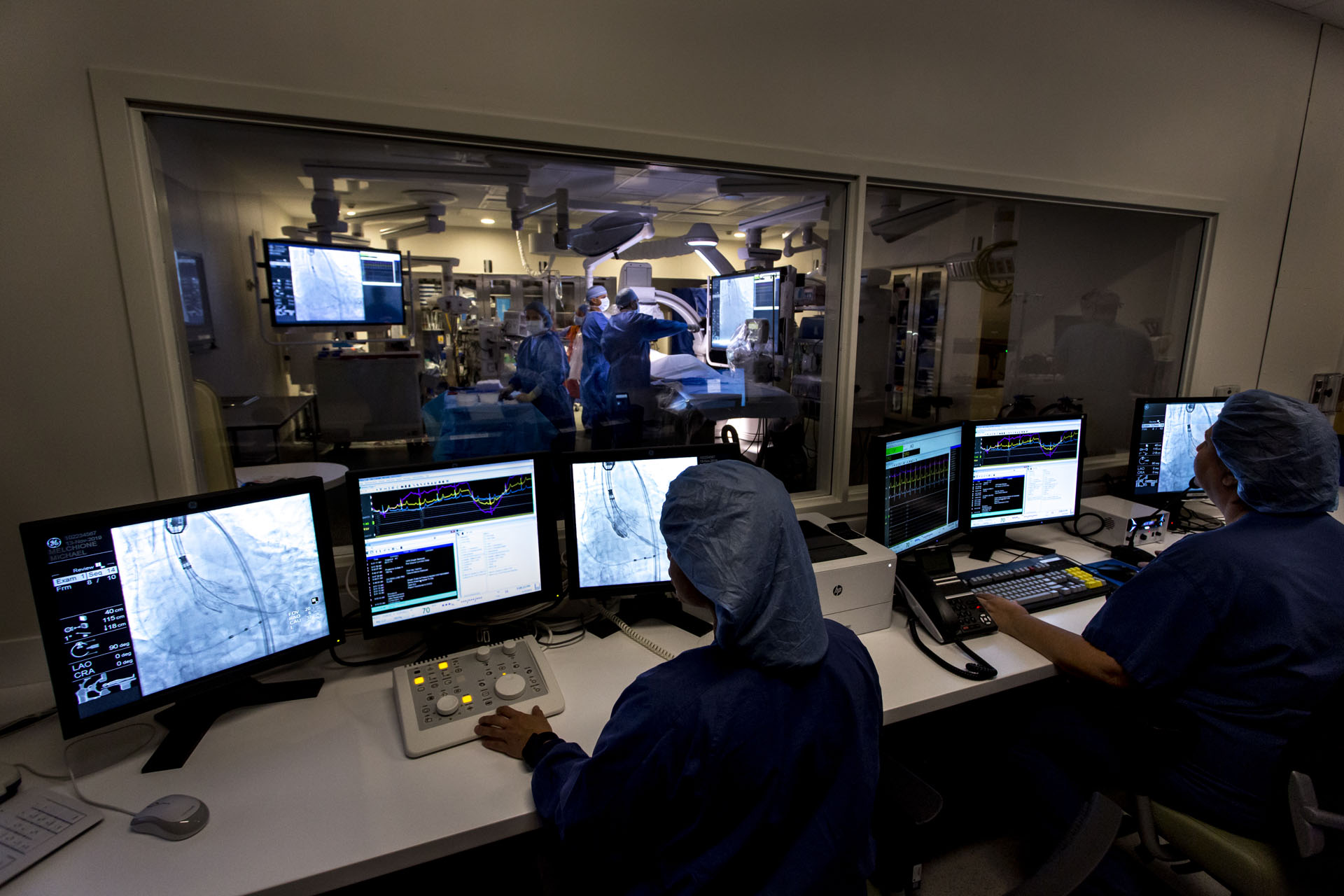IN RECOGNITION OF AMERICAN HEART HEALTH MONTH IN FEBRUARY, CARDIOLOGISTS AT HACKENSACK MERIDIAN HEALTH DISCUSS THREE OF THE MOST COMMON CARDIOVASCULAR CONDITIONS AND HOW THEY MANIFEST DIFFERENTLY IN WOMEN
BY AMANDA McCOY • PHOTOS BY AMESSE PHOTOGRAPHY AND CHRIS GAHLER
According to the Centers for Disease Control and Prevention, heart disease is the leading cause of death in American women, claiming 301,280 or 1 in 5 female lives in 2019 alone (for reference, 1 in 31 women die of breast cancer every year). Cardiovascular disease has often been characterized as a man’s affliction, but per the CDC, roughly the same number of women are diagnosed with a heart condition each year, and in many cases, their symptoms look vastly different than their male counterparts.
Heart disease is an umbrella term that refers to several different cardiovascular conditions, including heart attack, atrial fibrillation (often shortened to AFib), and advanced heart failure. Each condition carries its own set of risk factors and symptoms, and they often vary according to a patient’s gender. Across the network at Hackensack Meridian Health, cardiologists are leading the charge in not only providing cutting-edge therapies for heart disease patients, but empowering women to take control of their heart health by being aware of and understanding the risk factors, symptoms, and treatment options for protecting the most important muscle in the body.

“Heart disease is an equal opportunity killer for men and women,” noted Sheila Sahni, M.D., FACC, FSCAI, an interventional cardiologist and director of the Women’s Heart Program at Sahni Heart Center, part of Hackensack Meridian Health. She explained that when men and women present with a heart attack, a woman’s symptoms are often vague, which poses even more danger as they can be missed.
“Chest pain remains the most common symptom that patients will experience, whether they are a man or a woman,” continued Dr. Sahni. “However, men have a tendency to have a classic Hollywood heart attack with crushing substernal chest pain, while women have a tendency to experience symptoms that are more vague or nonspecific, such as shortness of breath, profuse sweating, unexplained nausea, a new migraine, unusual upper body discomfort, or lightheadedness.”
Women also have their own unique subset of risk factors, Dr. Sahni continued. “Pregnancy is usually a woman’s first cardiac stress test,” she said. “If you have high blood pressure during pregnancy, it can quadruple your risk of heart attack, even after the pregnancy ends. Another risk factor women face is menopause, because as estrogen declines, cholesterol increases. Other factors that tend to affect women more are diabetes, autoimmune conditions, breast cancer (particularly among survivors who underwent chemotherapy or radiation to the chest), and depression and mental illness. More women report an emotional stressor prior to a heart attack than men, who typically report a physical stressor.”
Dr. Sahni explained there is great collaboration across all of Hackensack Meridian Health’s sites. “We have an open runway to get a patient a higher level of care if needed. We have receiving centers across the network, which is important, because once a patient is identified with a heart attack, you have 90 minutes to open that vessel. Time equals muscle.”

The standard of care for heart attack patients is to bring them to the hospitals’ state-of-the-art cardiac catheterization labs, where a team of specialists is deployed to act on the heart attack right away. They are open 24 hours a day, seven days a week, and supply cardiologists with the technology to perform several advanced techniques, such as emergency or elective angioplasty, a minimally invasive procedure that restores blood flow to the heart muscle without open-heart surgery; the Impella Heart Pump for high-risk patients in cardiac shock; and procedures performed through radial artery access, using the wrist as an access point rather than the leg, which decreases bleeding.
Many women also suffer from micro vascular disease, which affects the walls and inner lining of microscopic coronary blood vessels that branch off from the larger coronary arteries. Because it’s not a full blockage, these patients often don’t require an emergency stent procedure. “But that’s not the end of their story,” continued Dr. Sahni. “At HMH, we have access to further testing for micro vascular disease, such as MRI.
What we see with women is that the blood vessels of the heart might erode over time; it’s much more subtle and doesn’t present as a full blockage. It’s important for a cardiologist to know the difference. A woman is her own best advocate. When you feel something out of the ordinary, you have to seek medical attention right away.”
Gender also plays a role in the effects of AFib, an irregular rhythm in the upper chambers of the heart that can prevent blood from properly flowing throughout the heart. While incidents of AFib are higher in men, especially at a younger age, women with the condition are twice as likely to suffer a stroke, one of the prevailing and most serious side effects of the irregular rhythm.
“Overall, women are generally more symptomatic than men,” explained Barbara Schechter, D.O., a cardiologist at Jersey Shore University Medical Center with a special interest in women’s health. “They tend to feel the palpitations more, and experience more fatigue and shortness of breath. However, in terms of AFib and cardiovascular disease in general, women tend to be treated much less aggressively than men. There needs to be a paradigm shift, and we’re beginning to see that happen.”

Dr. Schechter detailed many of the advances in AFib treatment and control that are currently employed across the HMH network. “One of the biggest risks with AFib is stroke, especially for women. Over the past decade or so newer medications have been developed to help protect against the risk of stroke that are much more convenient for patients. However, some have bleeding issues and cannot tolerate these types of medications. Now there is an alternative for these patients. We have the ability to place a left atrial appendage occluder device. In AFib, the vast majority of strokes come from an area of the heart known as the left atrial appendage. It’s a little pouch that comes off the heart where most blood clots in AFib form that can travel to the brain, causing a stroke. The device covers the appendage like an umbrella to prevent blood clots from traveling.”
Dr. Schechter added, “Regardless of gender, people with AFib have an approximate 3.5-fold increase in risk of death when compared to those without. We can improve that as we are becoming much more aggressive in keeping patients in a normal rhythm. One of the most important methods is AFib ablation, a procedure that helps block the inappropriate signals coming to the heart. It is not a cure, but it is a very important treatment strategy to keep a patient in normal rhythm and avoid the long-term consequences. This procedure has the highest rate of success when done within the first year of diagnosis. But women in particular are often referred for an AFib ablation rather late, and by then the heart structure has already changed. I encourage all patients, especially women with AFib, to discuss their treatment options with their cardiologist.”
Statistically speaking, advanced heart failure, like AFib, tends to affect women later in life, though Kanika Mody, M.D., a cardiologist and medical director of the Surgical VAD Program at Hackensack University Medical Center, said she treats patients young and old with overwhelmed hearts. While men and women share many of the same risk factors for heart failure, such as pre-existing conditions like a prior heart attack, inflammation of the heart muscle from myocarditis, a genetic disposition to damage, or chronic stress, she noted that women pose an additional risk.

“Hormonal fluxes in women, triggered by events like pregnancy or menopause, can weaken the heart muscle and lead to heart failure,” she said. “Chemotherapy, such as Adriamycin, which is commonly used to treat breast cancer, can also result in toxicity to the heart and cause heart failure.”
Women are more likely to experience heart failure with preserved ejection fraction, which occurs when the lower left chamber of the heart becomes stiff and is not able to fill properly with blood during the diastolic (or filling) phase, often causing fluid to accumulate in the lungs, veins, and tissues of the body.
“It’s so rampant in our older female population,” explained Dr. Mody. “The management is challenging because the condition doesn’t follow the same process as other forms of heart failure, which limits treatment options, but the symptoms are the same. There have been many recent advancements in medications and device therapy that help improve symptoms.”

Staying on the forefront of clinical advancements is a priority across all of Hackensack Meridian Health’s medical centers, noted Dr. Mody, adding: “Our entire team, from leadership to the physicians, is focused on furthering the science and the care of heart failure patients. We regularly participate in research studies to understand which new devices, medications, or therapies will be the one that saves lives.”
Hackensack Meridian Health
844.HMH.WELL
HackensackMeridianHealth.org/GetHeartCareNow
